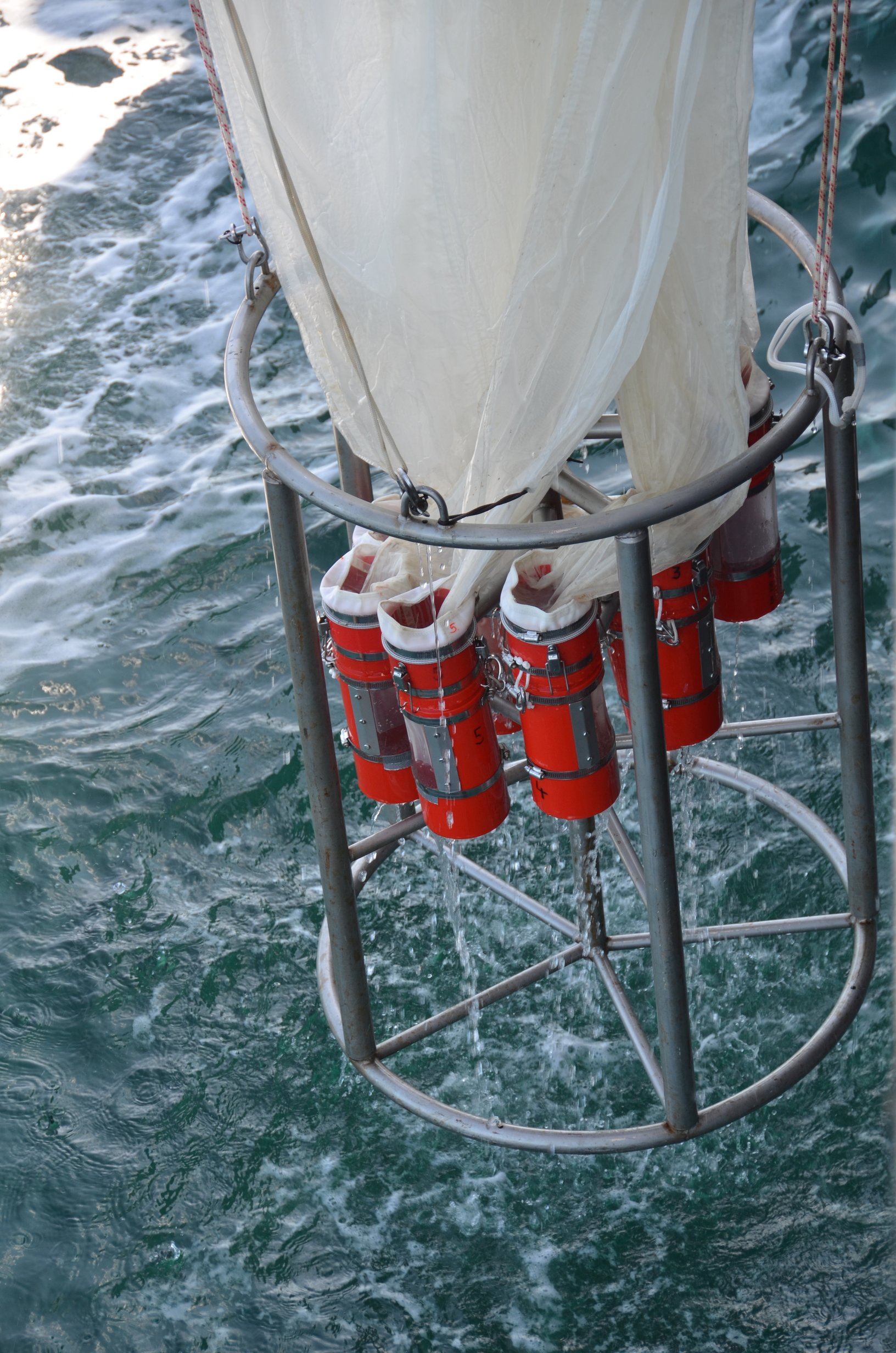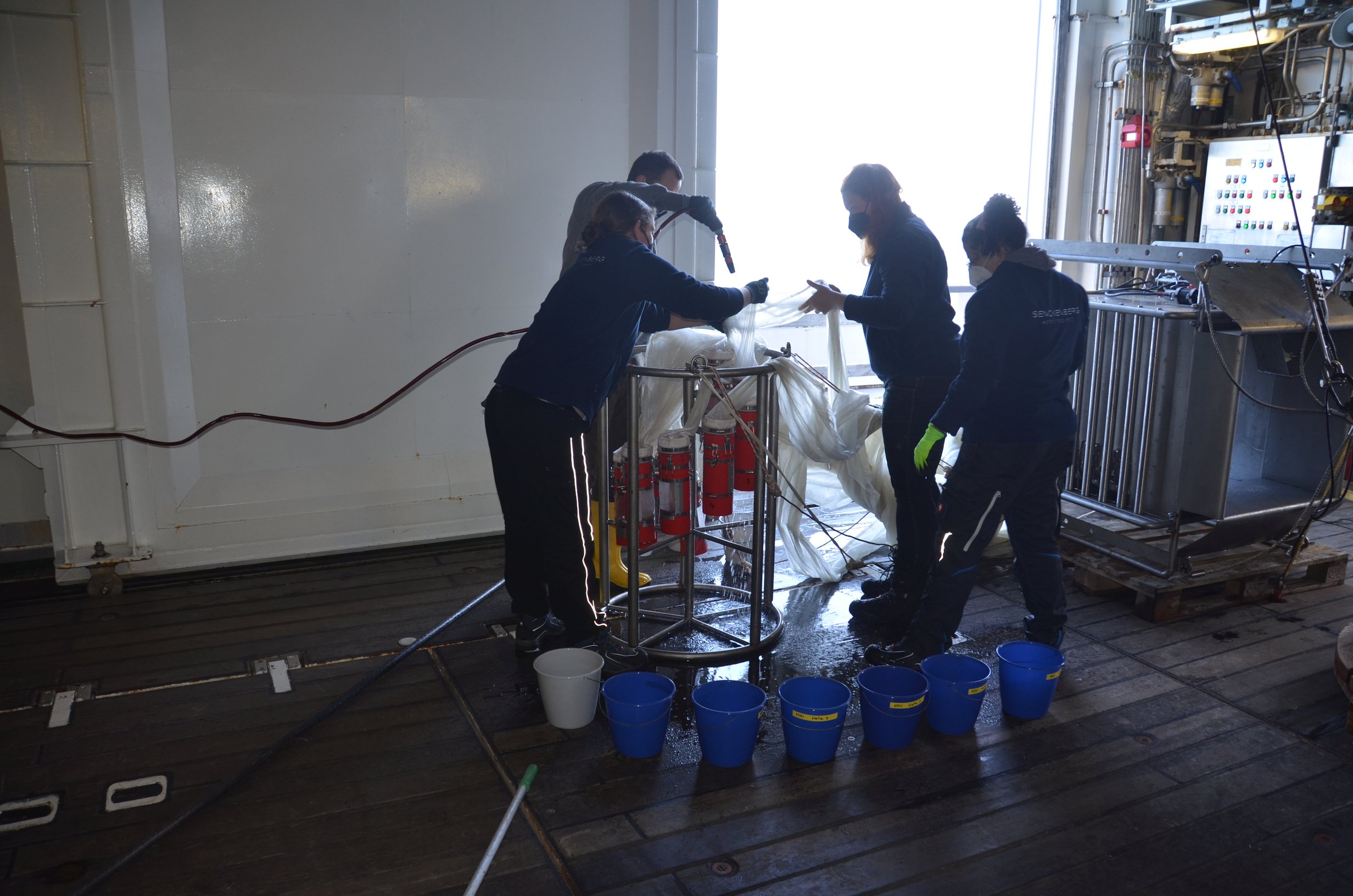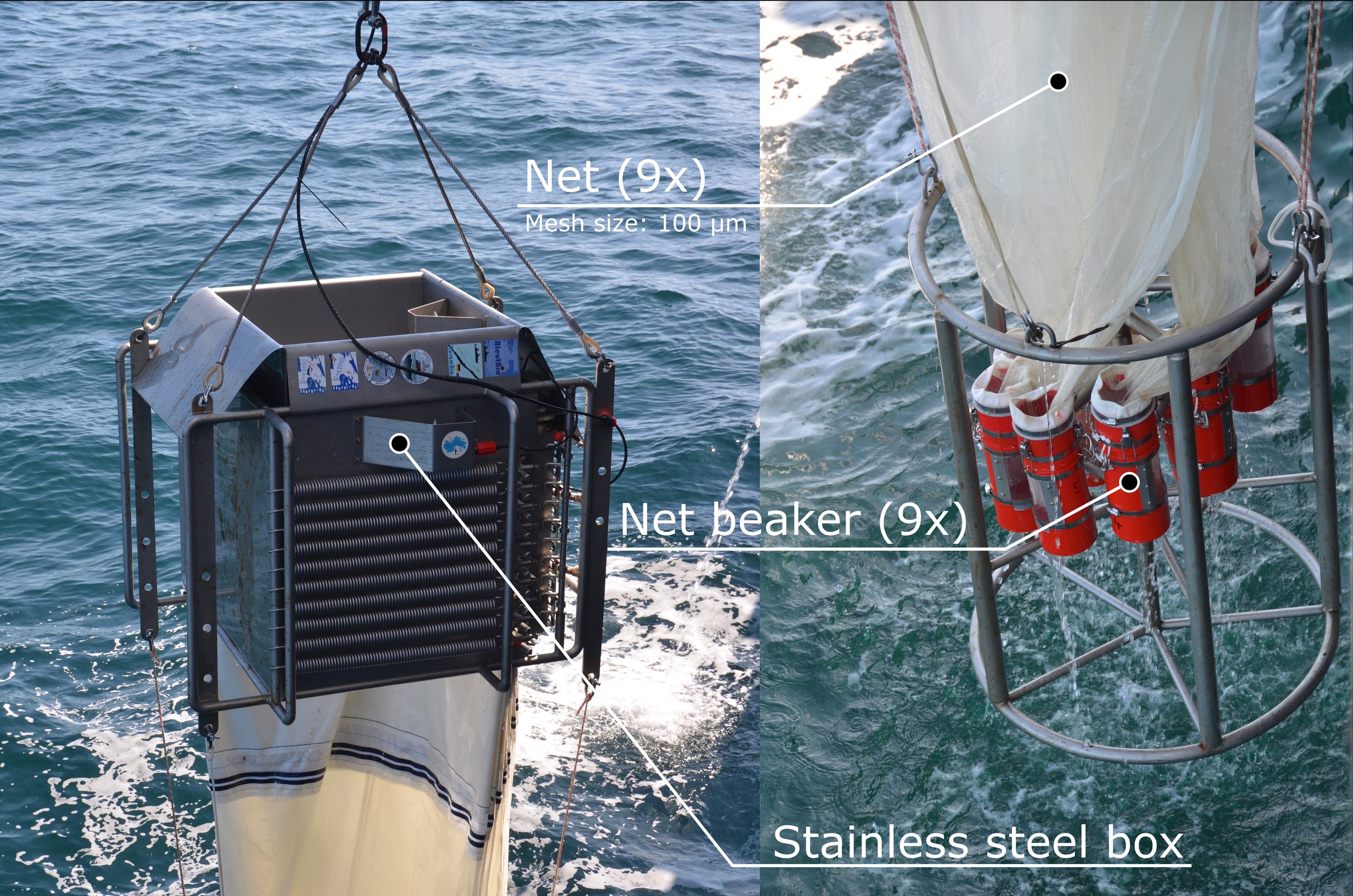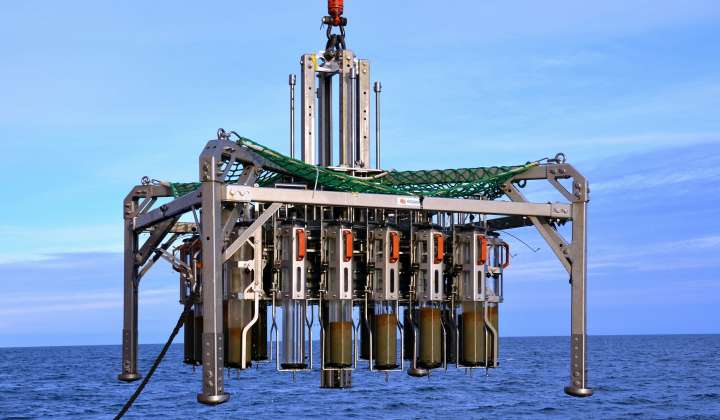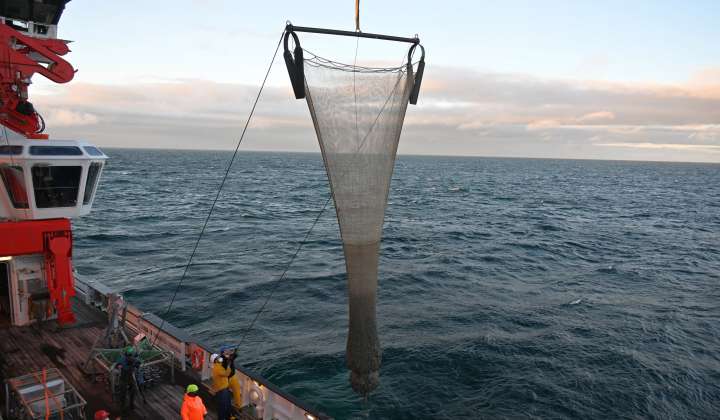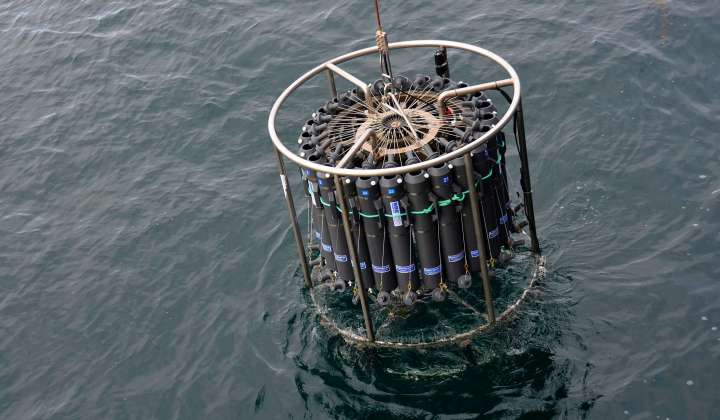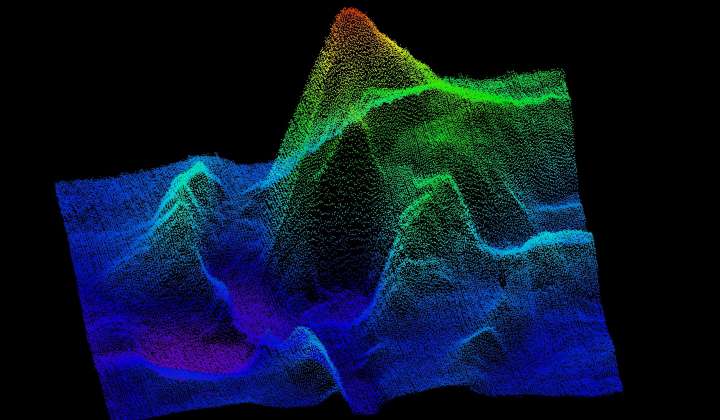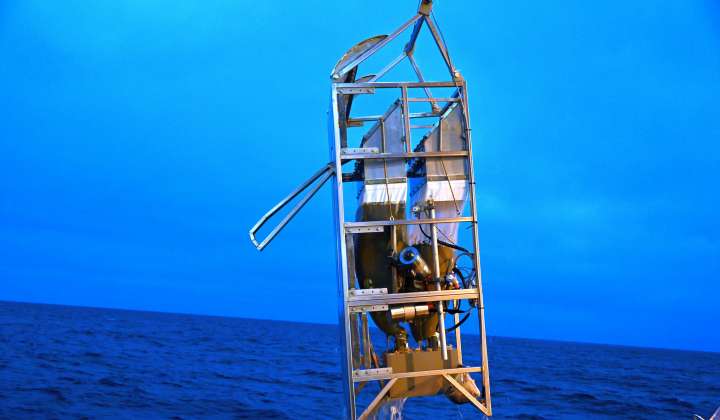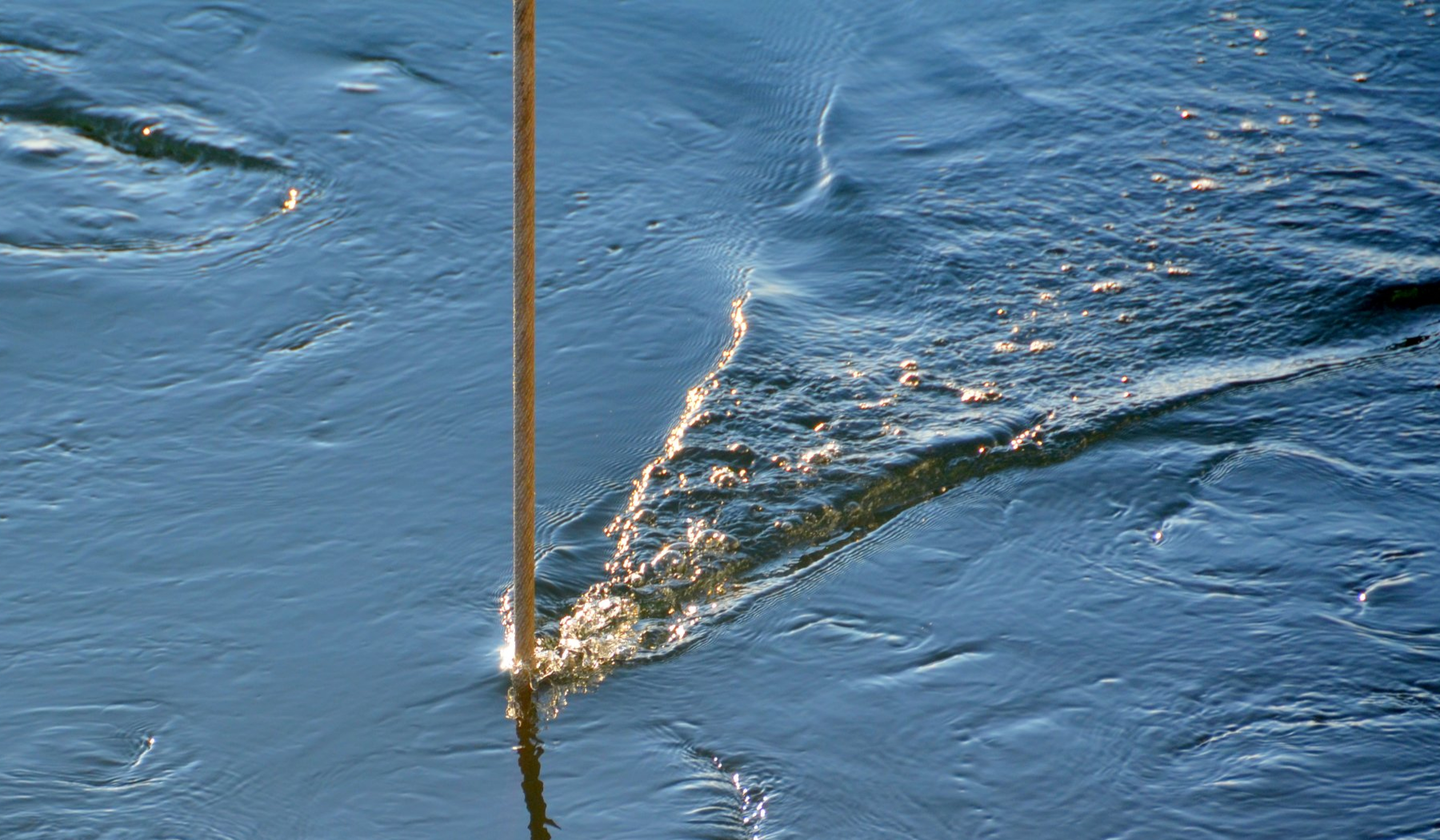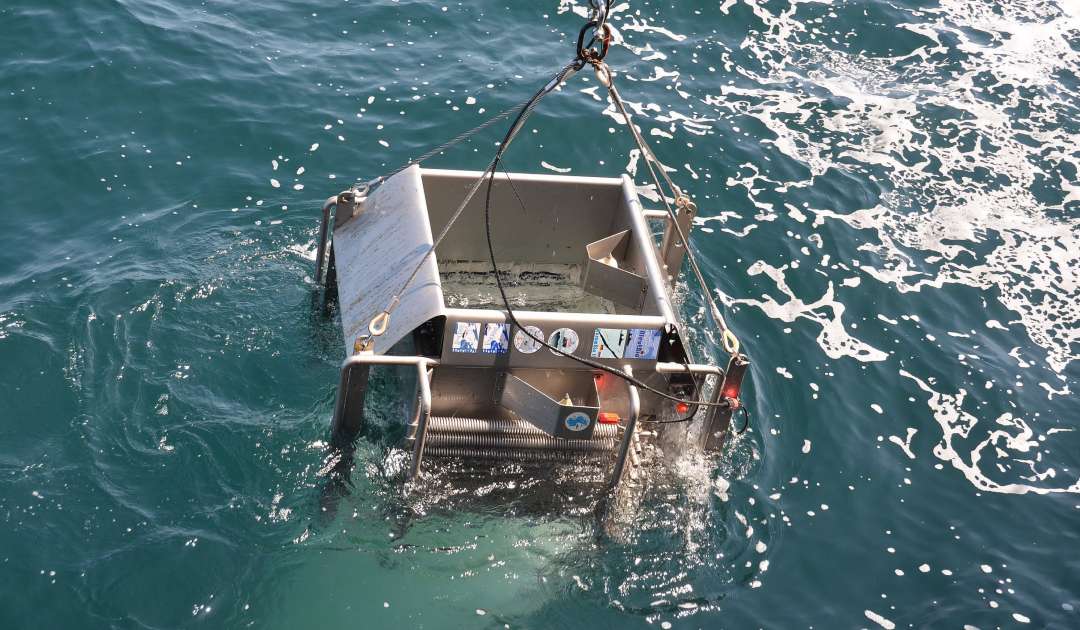
Gear construction: Stainless steel box equipped with 9 nets. Each net has a mesh size of 100 µm and a net beaker. The gear is connected to a board unit via cable. Additionally, a CTD, a chlorophyll sensor, an oxygen sensor and a flowmeter are attached to the gear, in order to measure different parameters, such as salinity, temperature, oxygen content, chlorophyll content and water flow during the deployment.
Dimensions: 1.2 m x 1.2 m x 1.3 m. The gear shows a quadrate mouth opening of 71 cm width and height resulting in 0.5 m² effective net opening.
Weight: ~ 420 kg
Deployment: The gear is prepared by attaching the net beakers to the nets and by cocking the nets. Then the CTD and board computer are turned on and the connection gets checked. Once everything is prepared, the net is lowered with a lowering speed of 0.7 m/s down to the maximum depth of the station. Once the net reaches its maximum depth, the first net is opened using the board computer and the gear is heaved with a speed of 0.7 m/s. The other nets are then opened/closed on the way up at their respective depths without stopping the winch.
Maximum Depth: 6,000 m
Follow-up work: Before the gear is brought onto the deck, organisms that are still attached to the sides of the nets are flushed into the net beakers using a seawater hose. Once the gear is on deck, the net beakers are removed, stored in buckets, and brought to the wet laboratory. There, the samples are split into different fractions and each fraction is fixated either in 4 % formalin (for morphological analysis) or 96 % ethanol (for genetic analysis, e. g. barcoding, metabarcoding). Once all samples are fixated, they are stored and brought home for further analysis.
Samples / Results: Zooplankton from different depth layers in different fixations. The samples are analysed using morphological and molecular methods. Eventually, the results will show zooplankton diversity and community structure in the deep-sea areas of the Bering Sea and the Aleutian trench as well as geographical distribution and vertical zonation of those communities.
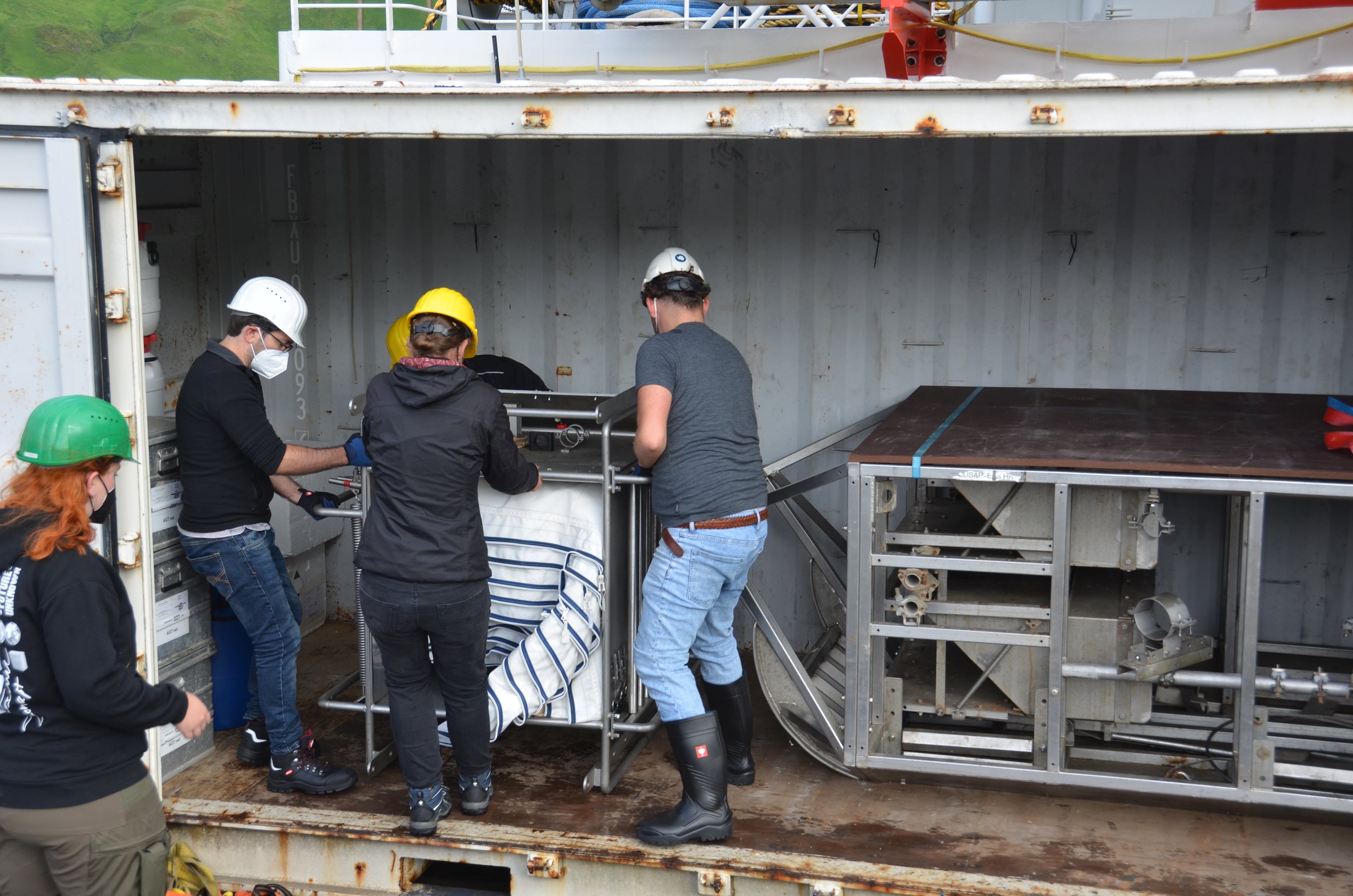
The box of the multinet stands next to an epibenthos sledge in the container.

In the background, the gate in the hangar of the RV Sonne, through which the multinet is deployed.
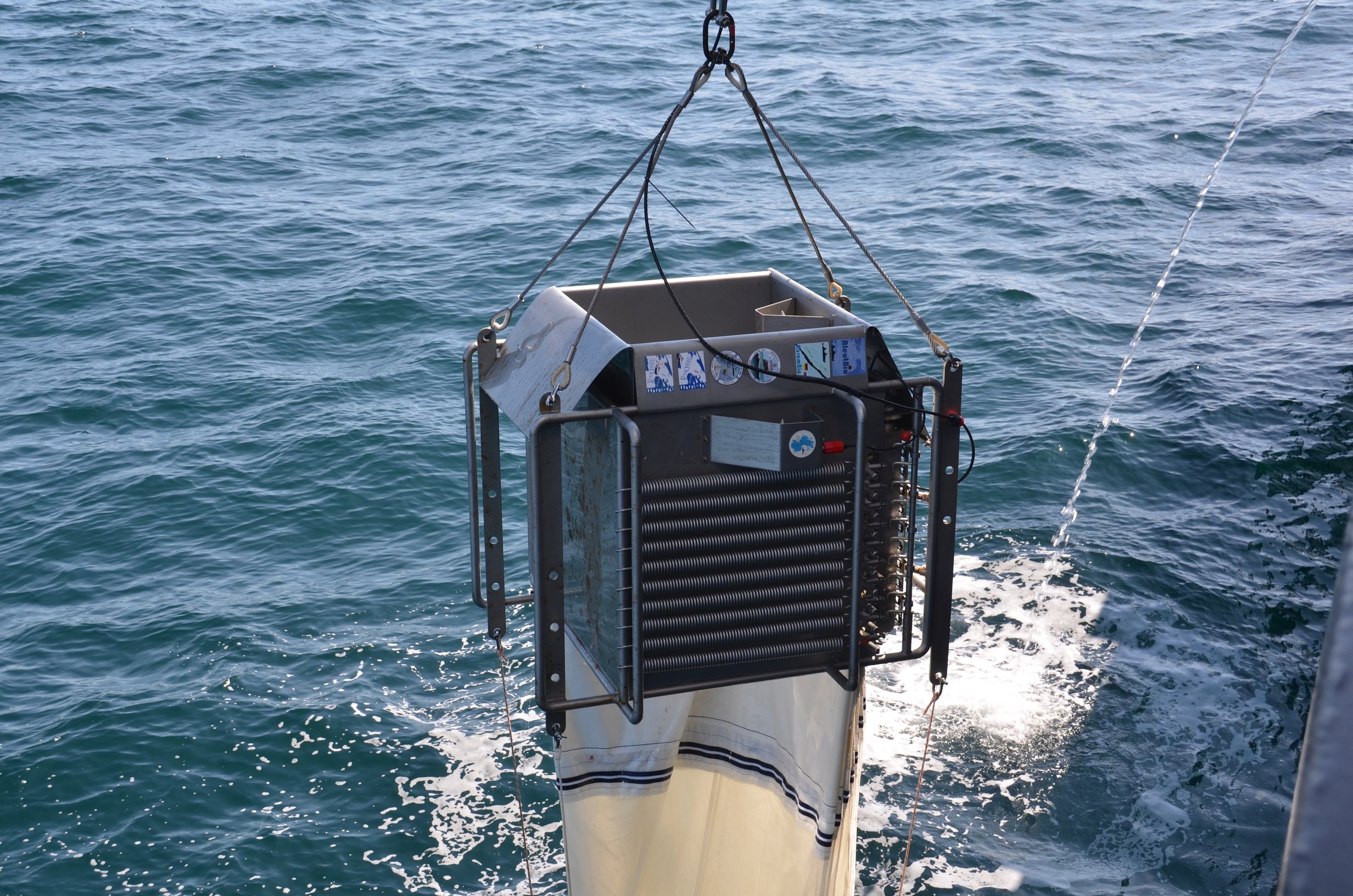

the multinet is handeld over the side on a sliding beam.
